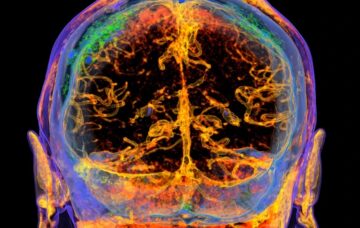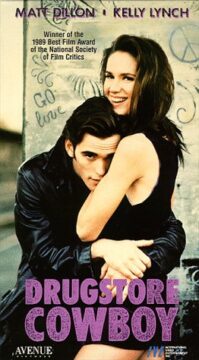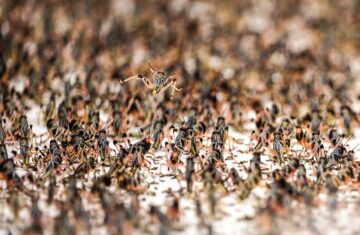Alex Clark in The Guardian:
 It starts with a lump on the neck, noticed while shaving and briefly ignored; progresses via a bewilderment of bureaucratic processes to a “gloriously jolly radiologist” dispatching him for a biopsy; and quickly, although not without the delays and mishaps of a painfully overstretched system, lands up with comedian Mark Steel being handed a cancer diagnosis. When Steel asks the consultant whether his tumour is likely to prove fatal, the doctor replies “Touch wood”, and then actually touches some wood; at least, his patient notes, he was being professional about it. Maybe if the cancer had spread, Steel reflects, “they’d offer a more extreme approach and get me to pick up a penny and pass a black cat”.
It starts with a lump on the neck, noticed while shaving and briefly ignored; progresses via a bewilderment of bureaucratic processes to a “gloriously jolly radiologist” dispatching him for a biopsy; and quickly, although not without the delays and mishaps of a painfully overstretched system, lands up with comedian Mark Steel being handed a cancer diagnosis. When Steel asks the consultant whether his tumour is likely to prove fatal, the doctor replies “Touch wood”, and then actually touches some wood; at least, his patient notes, he was being professional about it. Maybe if the cancer had spread, Steel reflects, “they’d offer a more extreme approach and get me to pick up a penny and pass a black cat”.
Cancer is common, and accounts of experiencing its arrival, treatment and – if you’re fortunate – aftermath are hardly rare. But this is not to suggest memoir fatigue. People, and illness itself, are infinitely various, and each chronicle reveals something different in between what have become the tropes of the genre: the shock of the news, the emotional and physical reserves required to endure treatment, the almost inevitably altered perspective on one’s own life and on more existential questions of life and death themselves.
More here.
Enjoying the content on 3QD? Help keep us going by donating now.

 THE YEAR IS 2008. David Foster Wallace has just died by suicide and every Spanish-language writer is rushing to their blog to post a heartfelt obituary for their favorite North American novelist.
THE YEAR IS 2008. David Foster Wallace has just died by suicide and every Spanish-language writer is rushing to their blog to post a heartfelt obituary for their favorite North American novelist.  A slimy barrier lining
A slimy barrier lining  F
F Democrats, let the Republicans’ own undertow drag them away. At this rate, the Trump honeymoon will be over, best case, by Memorial Day but more likely in the next 30 days. And in November 2025, we start turning the tide with what will be remembered as one of the most important elections in recent years: the Virginia governor’s race. From tax enforcers to rocket scientists, bank regulators and essential workers — the Trump administration is hellbent on
Democrats, let the Republicans’ own undertow drag them away. At this rate, the Trump honeymoon will be over, best case, by Memorial Day but more likely in the next 30 days. And in November 2025, we start turning the tide with what will be remembered as one of the most important elections in recent years: the Virginia governor’s race. From tax enforcers to rocket scientists, bank regulators and essential workers — the Trump administration is hellbent on 
 The nine Sámi languages still in use have an extensive vocabulary for snow — everything from åppås, untouched winter snow without tracks; to habllek, a light, airy dust-like snow; and tjaevi, flakes that stick together and are hard to dig.
The nine Sámi languages still in use have an extensive vocabulary for snow — everything from åppås, untouched winter snow without tracks; to habllek, a light, airy dust-like snow; and tjaevi, flakes that stick together and are hard to dig. “T
“T On one of her signature songs, the restless, almost phosphorescent 1976 anthem
On one of her signature songs, the restless, almost phosphorescent 1976 anthem  Among the most spectacular phenomena in nature is the sight of millions of desert locust (Schistocerca gregaria) juveniles marching together, flowing like a river through the arid habitat of North Africa and consuming vegetation as they go before molting to become devastating swarms of winged adults. Understanding how and why locusts exhibit aligned collective motion is vital for predicting and managing outbreaks. However, present knowledge of the rules that govern the emergence of such complex, patterned behavior and decision-making is based on a handful of theoretical models that recapitulate only some aspects of the observed behavioral patterns. On page 995 of this issue, Sayin et al. (
Among the most spectacular phenomena in nature is the sight of millions of desert locust (Schistocerca gregaria) juveniles marching together, flowing like a river through the arid habitat of North Africa and consuming vegetation as they go before molting to become devastating swarms of winged adults. Understanding how and why locusts exhibit aligned collective motion is vital for predicting and managing outbreaks. However, present knowledge of the rules that govern the emergence of such complex, patterned behavior and decision-making is based on a handful of theoretical models that recapitulate only some aspects of the observed behavioral patterns. On page 995 of this issue, Sayin et al. ( Every week at the office, you and your fellow employees have meetings to discuss progress on group projects and to divide tasks efficiently. Perhaps in the evening, you go home and cook dinner with your partner. At least once in your life, you might have seen a team of firefighters work together to extinguish a fire at a burning house and rescue those inside. You have probably also witnessed or participated in political demonstrations aimed at bettering the treatment of those in need. These are all examples of human cooperation toward a mutually beneficial end. Some of them seem so commonplace that we rarely think of them as anything special. Yet they are. It is not obvious that any of the other great ape species cooperate in such a way – spontaneously and with individuals they have never before met. Though there has been some evidence of cooperation in other great apes, the interpretation of studies on ape cooperation has also been contested. In the human case, cooperation is unequivocal.
Every week at the office, you and your fellow employees have meetings to discuss progress on group projects and to divide tasks efficiently. Perhaps in the evening, you go home and cook dinner with your partner. At least once in your life, you might have seen a team of firefighters work together to extinguish a fire at a burning house and rescue those inside. You have probably also witnessed or participated in political demonstrations aimed at bettering the treatment of those in need. These are all examples of human cooperation toward a mutually beneficial end. Some of them seem so commonplace that we rarely think of them as anything special. Yet they are. It is not obvious that any of the other great ape species cooperate in such a way – spontaneously and with individuals they have never before met. Though there has been some evidence of cooperation in other great apes, the interpretation of studies on ape cooperation has also been contested. In the human case, cooperation is unequivocal.